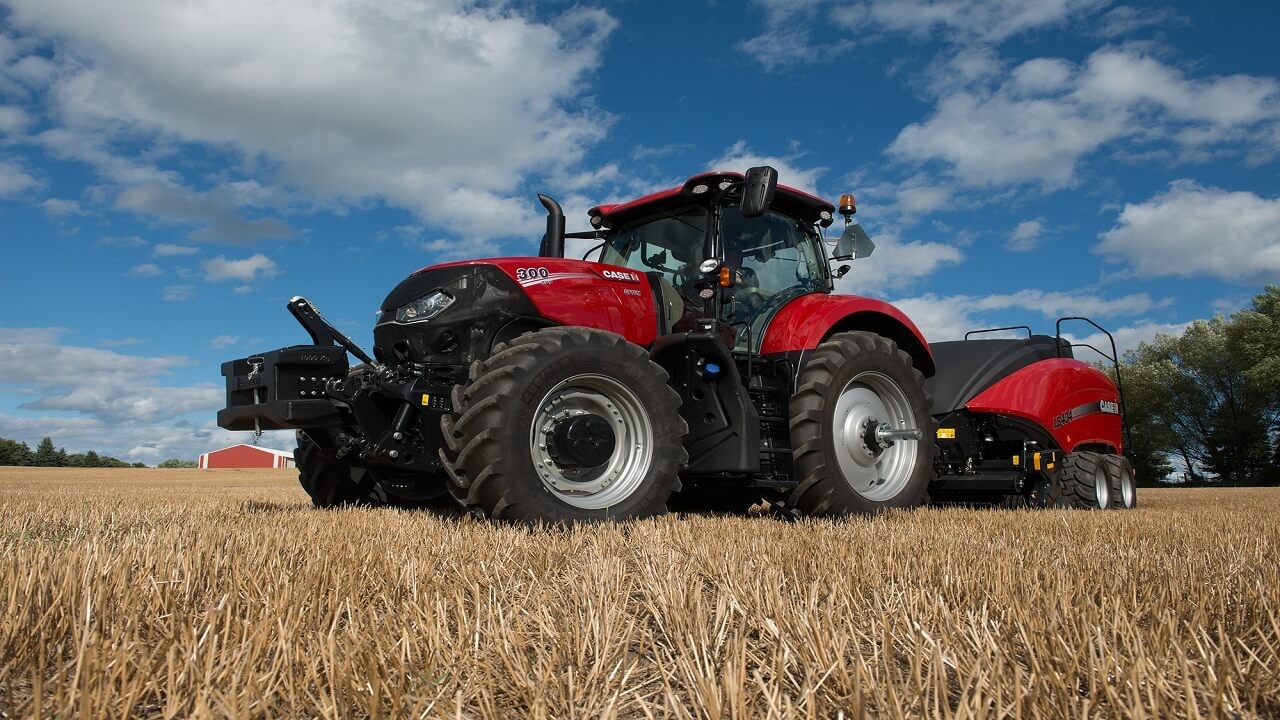
Farm Tractor
May 20, 2025, 1:40 pm
There are many farm tractor brands available for sale. However, before you buy or lease a farm tractor for your farming operation, you should consider these ten factors:
FARM TRACTOR
-
Farm Tractor Engine Power
Engine power is a critical factor of every farm tractor. Any farm tractor you want to use on your farm will either be pulling or pushing an agricultural equipment. For the farm tractor to effectively perform these task, it must have sufficient power. The more power the engine of the farm tractor has, the more work the tractor engine can perform.
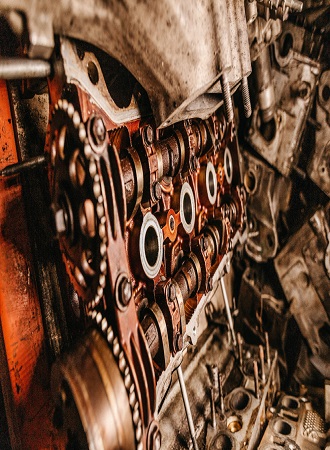
Engine power are normally rated in Horse Power. In mechanical engineering, one horse power is the amount of force required to lift a 250kg weight 0.3metres off the ground in 1 second. The higher the farm tractor engine power, the more weight the tractor can pull or push. A minimum of 35 horse power engine will be enough for your farming operational needs.
-
Farm Tractor Power take-off (PTO)
Because your farm tractor will be driving (pulling or pushing) other agricultural equipment, the power take-off feature of the farm tractor is very important. Power take-off is a feature of the farm tractor which quantifies the amount of power the farm tractor can transfer to an attached agricultural equipment or any other type of attachment.
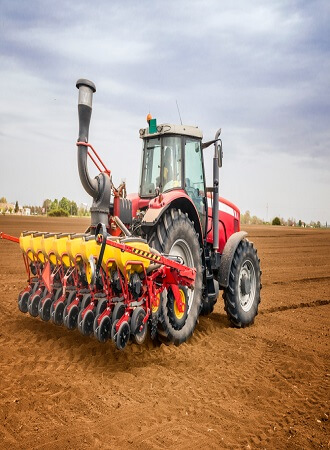
PTO is also measure in Horse Power (HP). The PTO power rating will determine the size mower or tiller you can efficiently run with the farm tractor - not whether you can run one at all. For example, if you need to mow with a 1.8metre wide mower, you will need more PTO horsepower than if you will mow with a 1.2metre-wide model. PTO power in the 25 to 50 HP range should be adequate for your farming operation.
-
Farm Tractor Driving
It is recommended that most tractors with less than 50 engine horsepower should have four-wheel drive when operated with a front loader. The reason for this is due to the extra weight placed over the front of the farm tractor which will bury the front wheels in any soft or wet ground conditions causing a noticeable loss of traction. Even if the farm tractor is a well-balanced two-wheel drive tractor, a sinking front end will cause an unsafe condition.
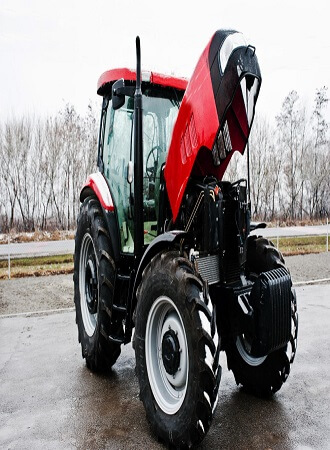
It is also possible that one front wheel can sink further than the other creating an imbalanced load, which might lead to a tractor rollover. Furthermore, the tires on four-wheel drive tractors are wider, creating a larger footprint, which is less susceptible to traction loss and has less resistance when turning.
A two-wheel drive farm tractor with a front loader will also have excess strain placed on the power-steering system, which in most small tractors is not strong enough to turn the wheels effectively in soft ground conditions at low engine RPM (revolutions per minute). The added weight of a front loader will place a heavy load on the front axle kingpin and pivot points, causing early wear. With a four-wheel drive farm tractor, the front end will pull itself and the likelihood of losing traction is decreased.
-
Farm Tractor Type of Transmission
There are several types of transmissions available on tractors which can vary the price of the farm tractor by a lot. The three most popular are Standard, Hydrostatic and Hydraulic Shuttle. Each of these transmissions is suited for a particular task, and each has their place for a particular farmer.
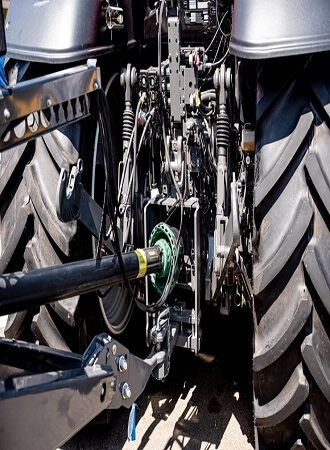
Standard transmissions are always the least expensive to purchase, and in some applications, the most reliable. If most of your work is operating a rotary mower or pulling a plow, this is probably a good choice of transmissions. However, if you plan on using a front loader often, there are other options at which you should look.
Hydrostatic transmissions have become more and more popular. These transmissions are much more durable than they used to be, and hold up well over the life of the farm tractor. Contrary to what most believe, hydrostatic transmissions are a very simple design, and do not require much maintenance.
In applications like loader work, where you are starting and stopping often, this is the transmission of choice. One major advantage over a standard transmission is speed. Having to stop, clutch and shift on a standard transmission is a considerably slower operation than simply moving your foot to go forward or reverse.
Hydrostatic transmissions are generally offered in compact tractors up to around 50 engine horsepower.
Hydraulic Shuttle transmissions are offered mostly on larger tractors where a hydrostatic transmission is not practical. You can usually find this transmission option on tractors from 50 engine horsepower all the way up to very large farm tractors, but it can be an option on some compact models as well.
Basically, this transmission is just like a standard transmission but with a lever under the steering wheel allowing you to shift from forward to reverse without stepping on the clutch pedal. This helps you use the farm tractor more efficiently since there is no clutching to shuttle between forward and reverse. However, you still need to step on the clutch to shift gears. You must be careful not to confuse this with a synchronized shuttle, which still requires clutching.
-
Farm Tractor Lift Capacities and Front Loaders
First, lift capacity can be measured by several different means. There is lift capacity to full height, static lift capacity, pivot pin capacity, bucket centre capacity, lift arm capacity and 60 centimetres aft of lift arm capacity.
When considering a front end loader for your farm tractor, it is always recommended that you buy a loader produced by the same manufacturer as the farm tractor that is performance matched to a particular model tractor.
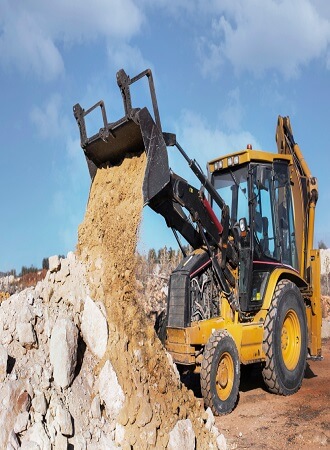
An important note on front end loaders: A trade-off exists between actual lift capacity and speed. If a front loader will lift what seems like a lot of weight, chances are it will have a very slow cycle time. Understand that when using a loader, cycle time is just as important as weight, as an operator doesn’t want to wait too long for the bucket to go up and down.
-
Farm Tractor Tyres
The tyres of your farm tractor are very important to the performance of the farm tractor. The power from the tractor’s engine is transferred to the tyres for the pulling and pushing action to be performed. If the tyres are deficient in any way, the tractor’s performance will suffer greatly. Your tractor’s tyres must have good traction. Traction is the ability of the tyre to grip the ground without sliding.
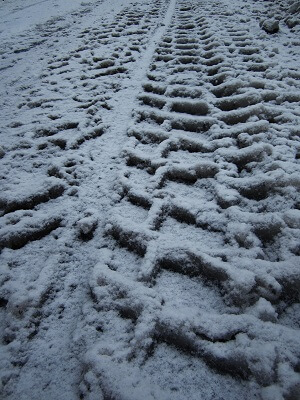
Tyres that give better traction save more horsepower, more fuel and make you spend less time on the field. The traction of a tyre is dependent on the tyre’s threads. Tyre thread bars are designed in angles and are measured in degrees. The lower the angle of the tyre’s thread bars, the better the grip of the tyre (i.e. the better the traction).

This increased traction helps maximise horse power therefore helping the farm tractor operators to save both time and fuel in the field. Always choose a tyre with low thread bar angle. A thread bar angle of 23° is ideal.
-
Farm Tractor After Sales Service and Repairs
You must ensure that the spare parts of your tractors are readily available to carry out repairs on your farm tractor when the need arises. It is advisable to buy your tractors from dealers who have a well-stocked repair workshop in Nigeria. This will ensure that your tractors will be repaired and serviced by professionals. Even if you decide not to use their service men to repair your tractors, you can always buy the necessary spare parts from them.
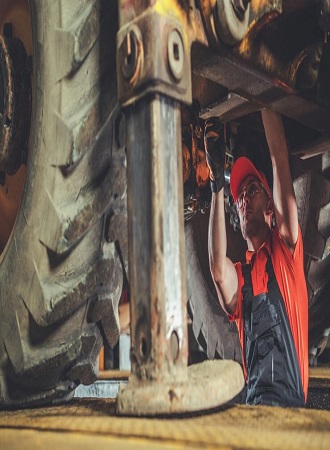
-
Farm Tractor Financing
Tractors are very expensive equipment and most farmers aren’t able to pay for one out rightly. Financial products that allow you to spread the payment of your farm tractor over a period of time is very important. If this is available and you take advantage of it, you will have extra cash to sort out other pressing financial needs on your farm. Always look to farm tractor dealers who have partnered with financial institutions to spread the payment of your tractors. Also, make sure you have a good understanding of how to calculate loan payments before committing to any farm tractor financing plan.
-
Farm Tractor Emission
The waste emissions from your farm tractor should be within regulations. In other to protect the environment, gaseous emissions from vehicles must be controlled and tractors are no exception. Environmental regulatory agencies focus on four types of engine emissions: carbon monoxide, hydrocarbons, nitrogen oxides, and particulate matter. As more focus is placed on health and environmental issues, governmental agencies throughout the world are enacting more stringent laws to reduce these emissions.
Because so many diesel engines are used in trucks and tractors, the U.S. Environmental Protection Agency (EPA) and its counterparts in Europe and Japan first focused on setting emissions regulations for the on-road market.

Ensure your farm tractor has an emission label that shows that its engine has been certified by the EPA and or CARB (California Air Resources Board). This label shows that the farm tractor is not emitting gaseous waste at levels dangerous to human health and to the environment.
10. Farm Tractor Autonomy
An autonomous farm tractor is a tractor that can drive itself, it doesn’t need a human operator.
A farm tractor that drives itself can help you in three main ways. The first advantage is that by improving fertilizer and chemical application rate uniformity and decreasing planting population inaccuracies, autonomous tractors greatly improve field application accuracy. An autonomous tractor can also help you by gathering data on plant health and soil conditions throughout the growing season with little assistance from a human. The third advantage is that it might lessen your workload and stress levels throughout the farming season.
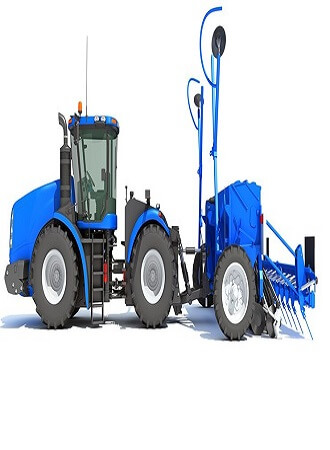
For autonomous tractors, there are five levels of autonomy, according to Case IH, and they are listed as follows:
1. Guidance – In Guidance, a tractor can be controlled by a GPS while driving and an operator is inside the tractor, like many tractors today. An operator is always present.
2. Coordinate and optimization – This level of autonomy is like a tractor and grain cart linked to the combine. The tractor and grain cart try to match the speed of the combine.
3. Operator Assisted Automation – This style of autonomy is much like a leader/follower architecture. One machine is fully autonomous while another machine has an operator present. The autonomous machine follows the operator through the field.
4. Supervised autonomy – This level of autonomy allows all machines to run on their own with a supervisor managing the machines nearby.
5. Full autonomy – The highest level of autonomy is full autonomy and no local supervision. However, there can be remote supervision
What are the parameters you should consider for picking an autonomous farm tractor?
To pick a good autonomous tractor, there are three important parameters you should consider. These parameters are:
1. GPS-based navigation
2. Path planning and obstacle detection sensor systems
3. The algorithm for control and decision-making
GPS-based Navigation
This system is a vital instrument for increasing productivity and cutting down on resource waste. Farmers can accurately traverse fields thanks to GPS in autonomous tractors, which uses satellite signals to deliver precise location data. By giving specific instructions for plowing, planting, and harvesting, they aid autonomous tractors in their planning.
These solutions optimize operations with unparalleled accuracy, reducing overlap, saving resources, and improving yield quality.
There are many guidance systems in the market but the ones from Trimble such as Trimble GFX-350 and Trimble EZ-Guide 250 are good.
Path Planning and Obstacle Detection Sensor Systems
An obstacle is any obstruction in the tractor's path. Depending on how they move, obstacles can be divided into three categories: dynamic obstacles, which are self-powered or moving and include things like tractors, pivots, and animals; static temporary obstacles, which need external power to move; and static permanent obstacles, which are immovable and include things like fence lines, barns, and trees.
Autonomous tractors use obstacle detection sensors to figure out barriers and steer around them. Ultrasonic sensors, RADAR, LIDAR, and RGB cameras are a few of the obstacle sensors that are employed. LIDAR sensors are the finest kind for autonomous tractors. According to research, LIDARs can identify items that are at least 15 cm tall and not concealed by grass, as well as humans strolling across rows of crops.
For best results, choose an autonomous tractor using a combination of two or three sensors.
Decision-making and Control Algorithm
For autonomous tractors to avoid obstacles and provide smooth trajectories, path planning algorithms are essential. Four functions require the use of algorithms:
1.Object Detection and Perception
2.Path Tracking and Control
3.Obstacle Avoidance
4.Decision-Making and Planning
While there are many algorithms available for these functions, you can select an autonomous tractor that uses a neural network algorithm, preferably Faster R-CNN (Faster Region-based Convolutional Neural Network).
FARM TRACTOR SAFETY TIPS
Tractors can be dangerous. When not properly handled, they can cause serious bodily injuries, deaths and amputations. It is therefore necessary to be very cautious when operating your farm tractor. The following safety measures should be followed when operating the tractors on your farm:
- Stop the farm tractor engine and disengage the power take-off (PTO) to work on the machine or any agricultural equipment attached to it.
- Always keep guards in place.
- Wear close fitting clothing to prevent entanglement of loose clothing parts.
- Secure long hair under a hat when working around the PTO.
- Instruct all operators about the hazards of the PTO.
- Keep children away from all turning parts of the machine not just the PTO.
- Never stand underneath the lift bucket
TRACTORS FOR SALE IN NIGERIA
There are many farm tractor brands available for sale in Nigeria. Some of these brands are Case IH, Massey Ferguson, John Deere, CAT etc.
If you have any questions or inquiries about prices and technical specifications of farm tractors, please send a mail to agsolutions@agricdemy.com

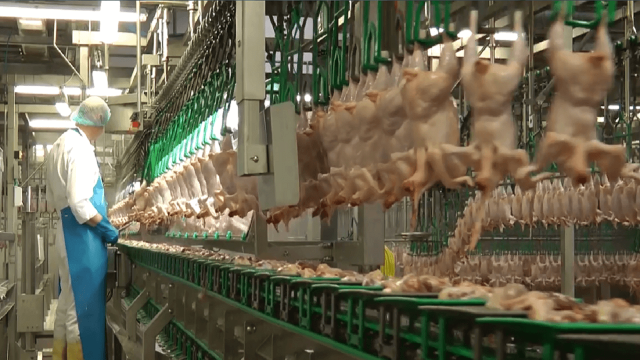
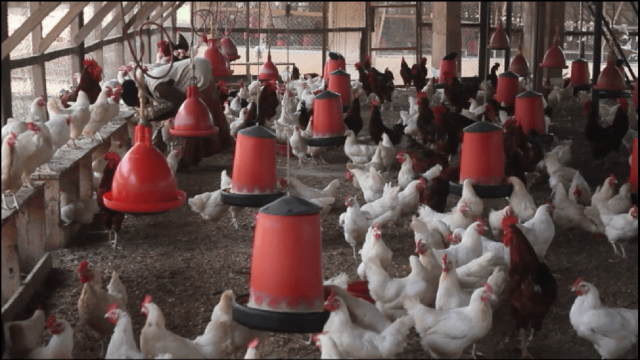
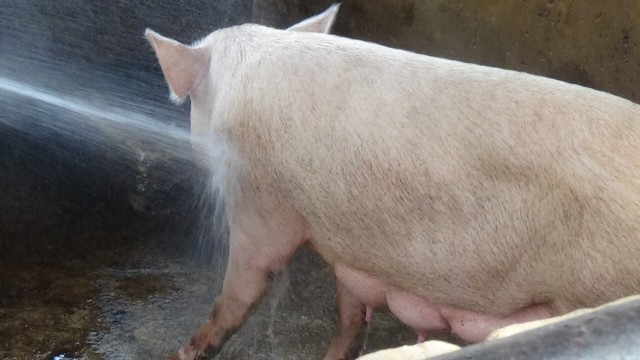

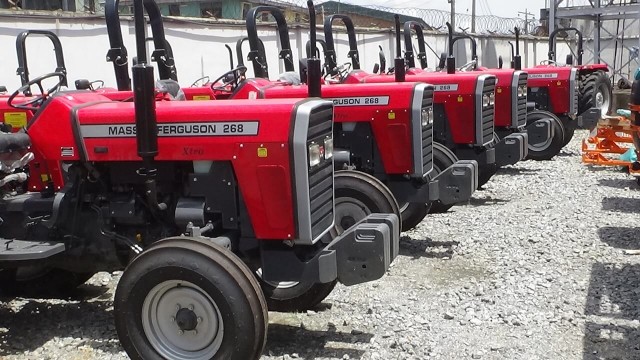
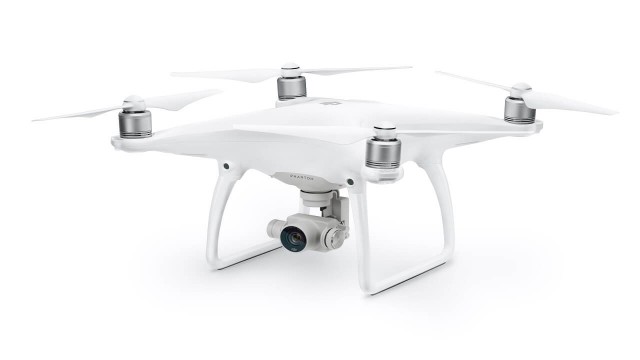

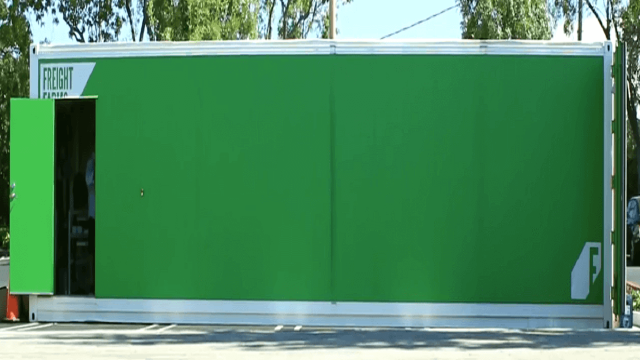
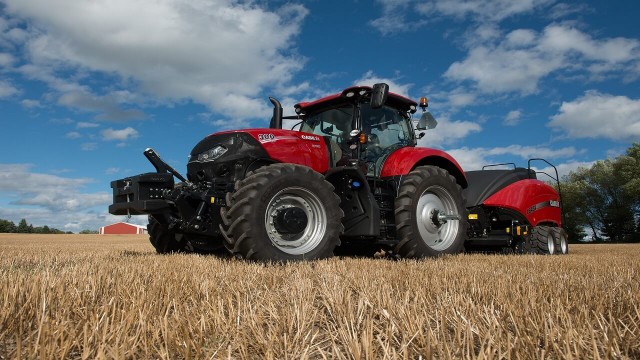


Share This Article: